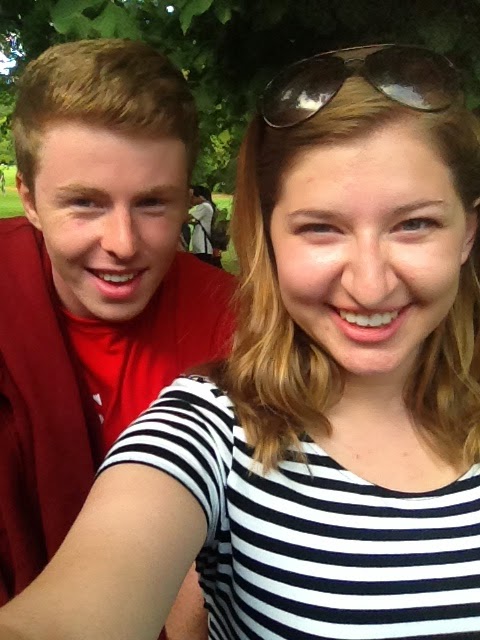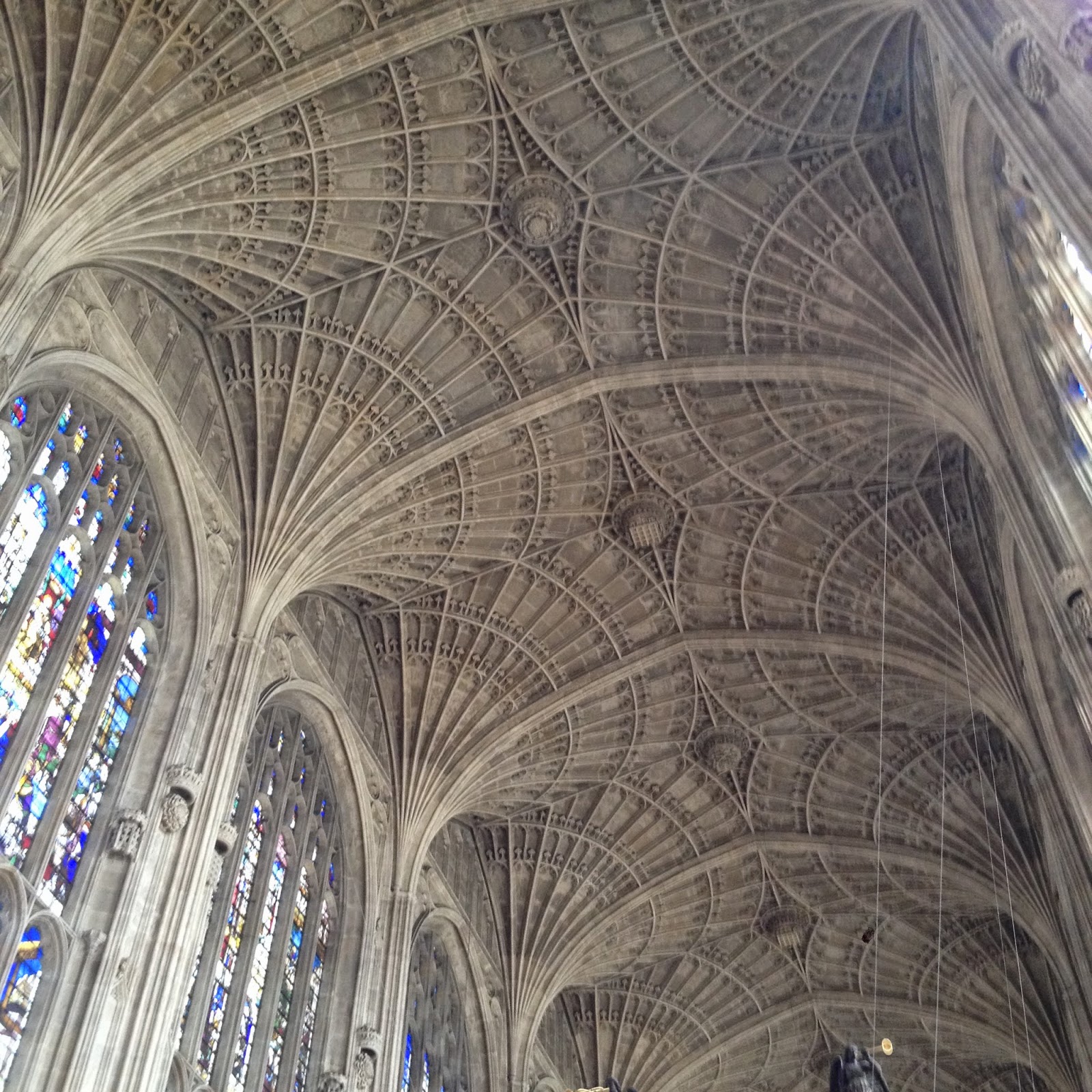After a two hour bus ride, we arrived at the University. I was stunned to see how large it is! Cambridge has about 18,000 students (including graduate students) and is divided into 31 colleges. The best way I can describe the college system is to say that it's a little like Hogwarts Houses. Each college has its own founder and history and is where the students of that college live, eat, and revise. Each college has its own area of land on the campus, with its own chapel and stores and restaurants that it gets the revenue from.
The college system is also really neat because you're a member of your college for life. Even years after you've graduated, you have the right to access the accommodations or eat in the hall. Another privilege is that you're allowed to get married in your college hall. (We saw several wedding parties today!)
We were split into three groups to have walking tours of the city with local guides. My tour guide was incredibly knowledgable and lovely!
 |
| The gate to King's College |
One thing that Cambridge is known for is punting (no, it has nothing to do with American football). Punts are small boats that punters navigate down the River Cam using a long pole. The river isn't very deep (only about seven feet), but it's still a little scary to see the guys standing on the boats!
 |
| Trinity College, which Prince Charles attended |
 |
| There are so many shops on campus! |
 |
| St. John's College, which Lady Margaret Beaufort founded! |
We got to go in King's College Chapel, which is magnificent. It was first built by Henry VI, but finished by Henry VIII. The stained glass windows are some of the only surviving Tudor ones in England. Unlike the other chapels' glass, they survived both the English Civil War and World War II.
During the English Civil War, the Parliamentarian (Puritan) troops were smashing windows of chapels at Cambridge. John Milton, known for writing Paradise Lost, was a student at King's College. He was also a good friend of Oliver Cromwell and convinced him to spare these windows. However, the chapel was used to house the Parliamentarian army's horses and you can still see the graffiti from the soldiers on the walls.
During the Second World War, the glass was taken out piece by piece and hidden away at different houses throughout the area in case of bombings. It took five years after the war ended to gather the glass from its different safe houses and restore it to the windows.
One thing that's fascinating to me is that all the carvings are Tudor symbols, like the Tudor Rose. However, the greyhound is a symbol of Margaret Beaufort, Henry VIII's grandmother (who I wrote my last paper about!). Because she was the founder of two colleges at Cambridge, Henry included her symbols in the chapel.
 |
| This organ was put in by Henry VIII |
 |
| They know that the organ is from 1533-1536 because it has Henry and Anne Boleyn's initials intertwined |
 |
| Charles Dickens used to come to this pub and Shakespeare's Players probably performed here! |
After that, we had some free time. So I got lunch at Pret of course!
I also found the Cambridge University Library Press bookshop and almost bought everything in it. #historymajorproblems
Then, we went punting!
 |
| We saw a bride and groom taking pictures! |
After punting, I went to Starbucks and then got one cream from one of the many ice cream stands.
 |
| So yummy! |
 |
| #selfieswithcharlie |















No comments:
Post a Comment